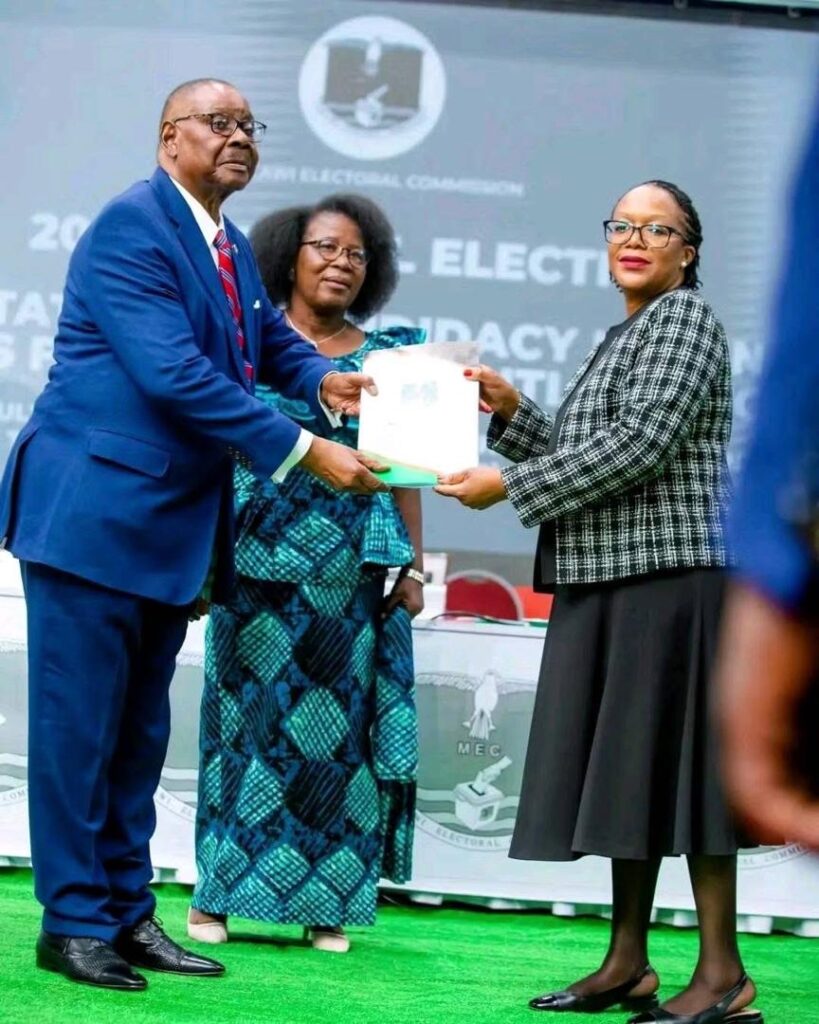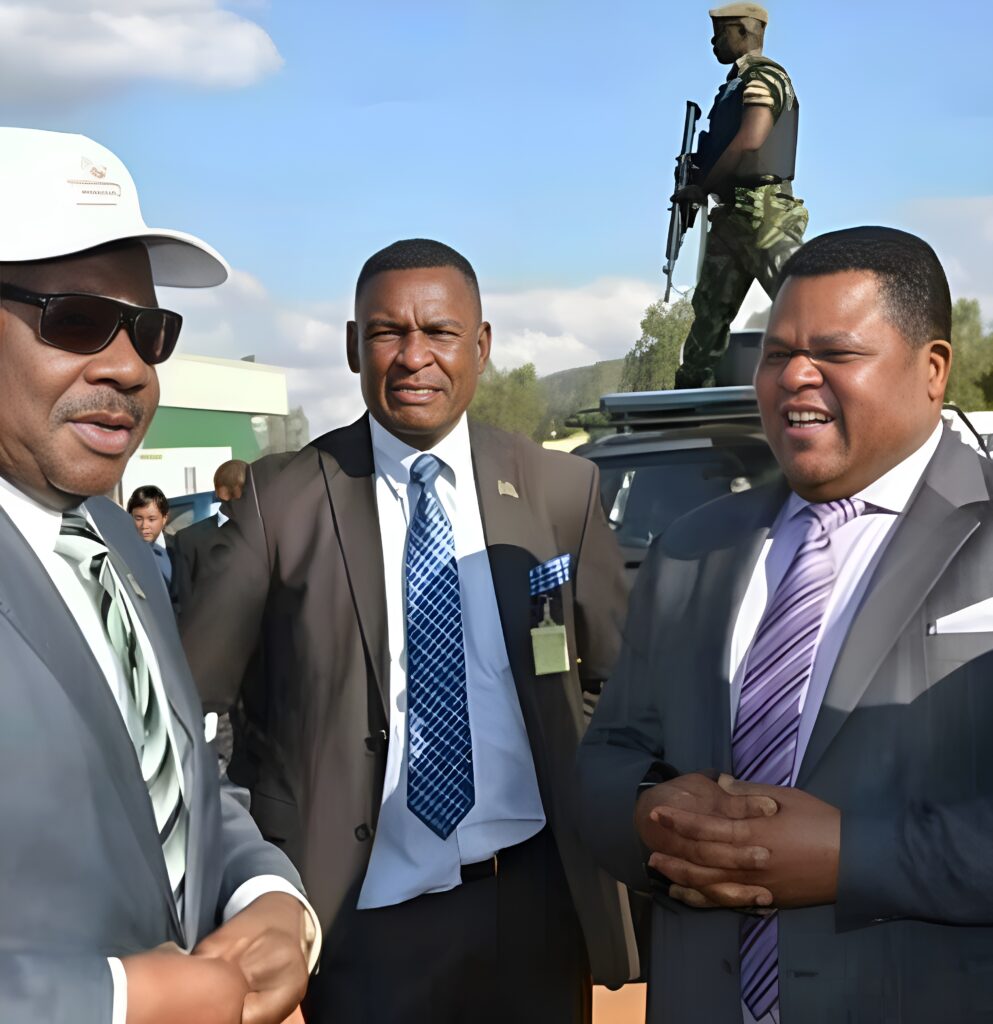Recent image of former President Arthur Peter Mutharika, slouched, expressionless and bound in a wheelchair at his Page House residence in Mangochi, has exposed the sad reality of the extent to which the Democratic Progressive Party (DPP) is ready to go to reclaim the converted State House seat.
The image could make any sane Malawian feel sorry for the old man, who in essence is supposed to be resting as an elder statesman instead of being paraded as a political trophy.
This is a photo exposing a glaring symbol of a party in moral and strategic crisis. It is a sobering visual confirmation of what many Malawians already suspected: that the DPP’s so-called “leader” is no longer physically or mentally fit to be the face of a modern electoral campaign, let alone to lead the nation again.

Yet, just a few days earlier, this same man was paraded at the Bingu International Convention Centre (BICC) to present his nomination papers, carefully staged to appear strong, defiant, and presidential.
But for those who watched closely, the illusion quickly dissolved. His speech was sluggish, his steps calculated and weary, and the entire event felt like a theatrical performance, directed not by the candidate, but by those clinging to his name to further their own ambitions.
The contrast between APM’s appearance at BICC and the recent wheelchair image from Mangochi is striking and damning.
At BICC, the DPP spared no effort in staging a scene of vitality. Carefully choreographed cameras avoided close-ups, choreographers prepared a short walk from car using a disability rump instead of the usual stairs into the BICC hall, and handlers ensured he had minimal speaking time. He smiled, waved, and raised hands but it all felt unnatural, even painful to watch.
Now, with the Page House photo, the mask has fallen.
This is the real APM. Slumped in a wheelchair, with his jacket wrinkled, tie loosened, and expression blank, he looks every inch the man who should be enjoying retirement, not running a nationwide presidential campaign in one of Africa’s most economically fragile nations.
The image doesn’t just suggest fatigue; it screams manipulation.
It also raises ethical concerns: Is the DPP violating the rights of a retired leader, using him as a campaign mascot? Is APM being given the dignity he deserves after years of service, or is he being paraded as a symbol of past glory to serve present greed?
This begs the question. Who really stands to gain from continuing to force this visibly frail 86-year-old man onto the campaign trail?


The answer lies within a small but powerful clique inside the DPP. Norman “Pythius Hiwa” Chisale, former security aide and de facto gatekeeper; Gertrude Mutharika, the former First Lady with ambitions to maintain influence; and Peter Mukhito, the former police chief and silent power player.
Together, these three figures have transformed APM from a retired elder statesman into a political puppet.
Mutharika’s current state, dependent on a wheelchair, with diminished energy and a clear disconnect from the vibrancy of the current political moment, should be enough to spark introspection and humane withdrawal from the campaign. Instead, his handlers are manipulating him to serve their interests.
Norman Chisale, with his deeply compromised past, is believed to be eyeing political survival and protection. With multiple court cases hanging over his head including allegations of money laundering, corruption, and even involvement in violent political activities, Chisale knows that an APM presidency could once again shield him from accountability.
He needs a puppet leader to extend the immunity he once enjoyed in State House.
Gertrude Mutharika, meanwhile, is haunted by the loss of First Lady prestige and the fear of being sidelined in a future political order. Her desperation to remain relevant in Malawian politics is driving her to push her aging husband back into the race, regardless of the toll it takes on him.
It is no longer about love or dignity, it is about power and preservation.
Peter Mukhito, ever the shadow operator, is playing the long game.
With an eye on returning to the inner sanctums of power, he sees the current political vacuum in the DPP as an opportunity. A weak APM presidency suits him perfectly, one where he can pull strings without scrutiny.
This is not just about optics or personal well-being.
The forced candidacy of a clearly unwell leader sets a dangerous precedent in Malawi’s democracy. It signals that some parties value control over competence, that they would rather rally around a medically compromised figurehead than allow democratic succession to flourish within the party.
It exposes the DPP’s moral bankruptcy, that a party once in government is now so bereft of credible leadership that it must dig up its frail former president, prop him up, and force him to pretend he still has the capacity to lead.
It’s no coincidence that those blocking a leadership transition within DPP are the very same individuals most implicated in past scandals: Chisale, Mukhito, and others. They are not just resisting change, they are terrified of it. A younger, cleaner, and independent leader would represent a threat to their unchecked access to influence and resources.
As Malawians head to the polls in September, the question they must ask is this: Do we want to be governed by a man who is being pushed in a wheelchair by power brokers with questionable motives, or do we want fresh, competent leadership with energy, vision, and integrity?
The electorate deserves a president who can debate ideas, travel the country, answer questions, lead in crisis, and make decisions on the spot. APM, in his current state, is simply not that person. And if elected, he would be little more than a figurehead, leaving the real power in the hands of people like Chisale and Mukhito.
What happens when a country is led by a man who can’t attend Cabinet meetings without assistance? Who signs off policy documents without understanding their implications? Who appoints ministers and directors based on whispered suggestions from the shadows behind him?
We’ve seen this before, not just in Malawi, but across the continent. Puppet presidencies lead to unchecked looting, policy paralysis, and state capture by unelected power centers.
The DPP had a chance to present itself as a reformed, modern party ready to regain public trust after the electoral defeat of 2020. Instead, it chose nostalgia over innovation, silence over reform, and manipulation over renewal.
By forcing APM back into the race, they are not just disrespecting the man himself, they are insulting the intelligence of Malawians. They are assuming that a few staged rallies, doctored social media clips, and fake energy at the podium can erase the visible reality of an elderly man who should be resting, not ruling.
It’s no surprise that key members of the opposition, including Khumbo Kachali, Frank Mwenifumbo and Timothy Mtambo have withdrawn from alliances involving the DPP. They can see what many Malawians see, a party hijacked by greedy opportunists, running on fumes, and using a tired man as a placeholder for state capture.
This wheelchair image must be a final wake-up call to voters. Not because age should disqualify anyone, but because honesty, capacity, and independence from manipulation should. And APM, in his current state, is no longer his own man.
The real candidates behind this campaign are not on the ballot. They are sitting in the shadows of Page House, whispering in his ear, scripting his appearances, and counting on public sympathy to slip back into power.
The question is: will Malawians fall for it?
THE PANGOLIN ONLINE IMAGE ANALYSIS

To be sure that this image is not AI generated or digitally manipulated, the Pangolin Online technical team had to do a visual analysis using advanced AI tools and concluded as follows:
Based on a visual analysis of the image, there are no immediate signs that it is AI-generated.
Here’s why:
1. Realistic Facial Details
- The facial features, skin textures, and shadows on the man in the foreground appear consistent with a real photograph.
- Glasses reflect light naturally.
- Expression and muscle tone look human and not artificially smooth or exaggerated.
2. Natural Background and Lighting
- The lighting across the image is consistent. Highlights and shadows fall naturally on all subjects.
- Depth of field (sharp foreground, slightly blurred background) is typical of a photo taken with a real camera.
3. Hands and Limbs
- Fingers and hands appear anatomically correct — AI often struggles with hands, but these look realistic.
- Arm and leg proportions also appear natural.
4. Clothing Details
- The folds, textures, and shadows on the suit and shirt behave as expected in natural light.
- Watch, buttoning, and tie are well-aligned and realistic.
5. People in Background
- The expressions, postures, and facial differences among the people in the background also suggest this is a candid, real-life scene rather than a synthetic one.
- An Error Level Analysis (ELA) image shows no abnormal error patterns or bright patches, which would typically suggest digital tampering or AI manipulation. Here’s what this means:
ELA Results Summary:
- Uniform compression artifacts: The ELA shows consistent, low-level noise across the entire image, expected from a standard JPEG.
- No sudden bright spots or outlines: These would indicate that parts of the image were edited or inserted separately (as in many AI composites).
- Natural contrast and compression: The areas around the face, hands, suit, and background compress evenly, reinforcing authenticity.
Final Technical Verdict:
- There is nothing obviously inconsistent — no mismatched eyes, extra fingers, warped ears, or incorrect text — which are common in AI-generated images. If AI was involved, it would have to be a very high-fidelity generation, possibly based on a real photograph (e.g., through face-swapping or image enhancement), but even that is not apparent here.
- This image appears to be a real photograph, not AI-generated. If you suspect manipulation or want a forensic-level analysis (e.g., checking for hidden edits or EXIF data), I can help you run more technical checks — just let me know.
- There are no forensic indicators (via ELA) of image manipulation or AI generation.
- Combined with the earlier visual analysis, the image appears to be a genuine photograph, not AI-generated or edited in a deceptive manner.








